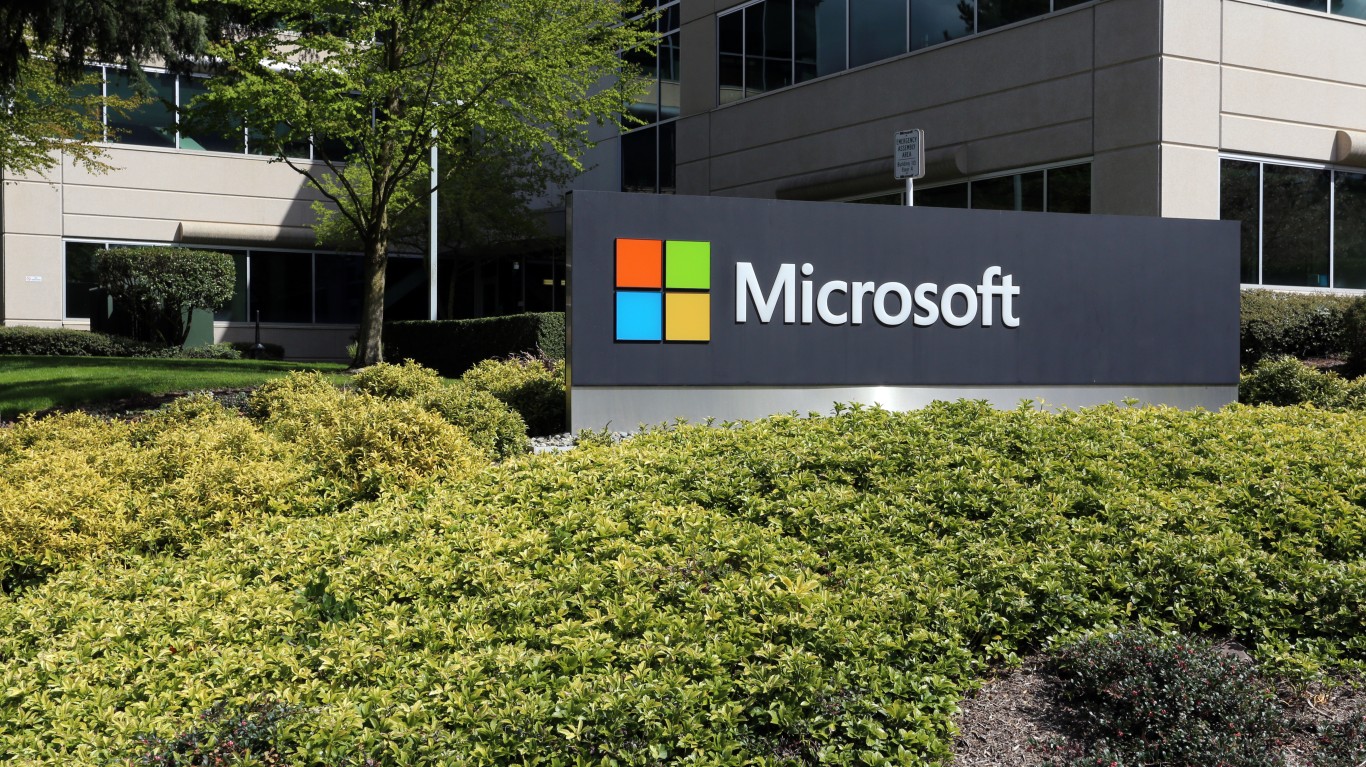Investing
Zacks Earnings Trends Highlights: Microsoft, Alphabet, Meta and Nvidia

Published:

Zacks Director of Research Sheraz Mian says, “Outside of the Energy sector, estimates are very stable and are actually going up for some sectors.”
Note: The following is an excerpt from this week’sEarnings Trends report. You can access the full report that contains detailed historical actual and estimates for the current and following periods, please click here>>>
For 2023 Q2, S&P 500 earnings are expected to decline -8.6% from the same period last year on +0.3% higher revenues. This would follow the -3.4% decline in index earnings in the preceding period (2023 Q1) and the -5.4% decline in the last quarter of 2022.
In other words, 2023 Q2 is expected to be the third consecutive quarter of declining S&P 500 earnings. The expectation currently is for another earnings decline in Q3 of -2.1%, after which growth turns positive in Q4 and continues in 2024. In fact, Q3 earnings would be positive had it not been for the Energy sector drag.
The long-feared recession doesn’t show up in this near-term earnings outlook. A big-picture view of corporate profitability on a long-term basis doesn’t leave much room for a recession either
These growth expectations reflect current bottom-up consensus earnings estimates for the individual S&P 500 companies that, in turn, are based on the estimates from individual sell-side analysts that cover those companies.
Predicting recessions is beyond the core competence of equity research analysts. But they do keep a close eye on the evolving business trends for the companies and industries they follow. Analysts maintain elaborate financial models for the companies in their coverage, which allows them to come up with their earnings, revenues, and other estimates.
We at Zacks make it our business to closely monitor how analysts’ earnings estimates evolve over time. In fact, our rating system, the Zacks Rank, is based on earnings estimate revisions.
Regular readers of our earnings commentary know that we have flagged a notable stabilization in the estimate revisions trend since the start of 2023 Q2, reversing the persistently negative trend that had been in place for almost a year prior.
Earnings estimates in the aggregate for the S&P 500 index have come down only a touch since the start of April, with a number of key sectors starting to see modest positive estimate revisions. These sectors include Construction, Industrial Products, Autos, Tech, Medical, and Retail.
Hard to tell at this stage if the revisions trend will remain on its recent positive trajectory or revert back to its original negative trend. But it is nevertheless a market-friendly development.
The strong Microsoft MSFT and Alphabet GOOGL reports reassured investors of opportunities in artificial intelligence while showing clear signs of stabilization, if not altogether improvement, in their core businesses.
Alphabet’s better-than-expected Q2 earnings and revenues represented year-over-year growth rates of +14.8% and +8%, respectively. The company’s results show reacceleration in search and clear signs of stabilization in advertising spending, with the latter getting reconfirmed by strong results from Meta META, whose +26.2% earnings growth in Q2 came paired with +11% top-line growth and some margin gains.
Microsoft’s top- and bottom-line beats represented year-over-year earnings and revenue growth rates of +20% and +8.3%, respectively. Guidance suggested strong demand for its AI services, as the raised Azure revenue guidance shows. Microsoft also indicated accelerating its cloud investments, with capex sequentially increasing each of the next four quarters. This likely provides a favorable read-through for Nvidia NVDA and other chipmakers.
Microsoft, Alphabet, Meta, and Nvidia are part of what we call the ‘Big 7 Tech Players’, with Apple, Tesla, and Amazon as the remaining club members. These mega-cap players have led the market’s surge this year, though the rally has recently expanded beyond these seven stocks.
For the ‘Big 7 Tech Players’ as a whole, Q2 earnings are expected to be up +20.4% from the same period last year on +9% higher revenues.
Q2 earnings for the Tech sector as a whole are expected to be up +0.5% from the same period last year on +0.9% higher revenues. Estimates have inched up since the period got underway, largely reflecting more effective cost controls. But the aforementioned signs of stabilization in Microsoft and Alphabet’s core businesses will go some ways towards improving the revenue outlook for the group.
Microsoft Corporation (MSFT): Free Stock Analysis Report
NVIDIA Corporation (NVDA): Free Stock Analysis Report
Alphabet Inc. (GOOGL): Free Stock Analysis Report
Meta Platforms, Inc. (META): Free Stock Analysis Report
To read this article on Zacks.com click here.
This article originally appeared on Zacks
Start by taking a quick retirement quiz from SmartAsset that will match you with up to 3 financial advisors that serve your area and beyond in 5 minutes, or less.
Each advisor has been vetted by SmartAsset and is held to a fiduciary standard to act in your best interests.
Here’s how it works:
1. Answer SmartAsset advisor match quiz
2. Review your pre-screened matches at your leisure. Check out the advisors’ profiles.
3. Speak with advisors at no cost to you. Have an introductory call on the phone or introduction in person and choose whom to work with in the future
Thank you for reading! Have some feedback for us?
Contact the 24/7 Wall St. editorial team.